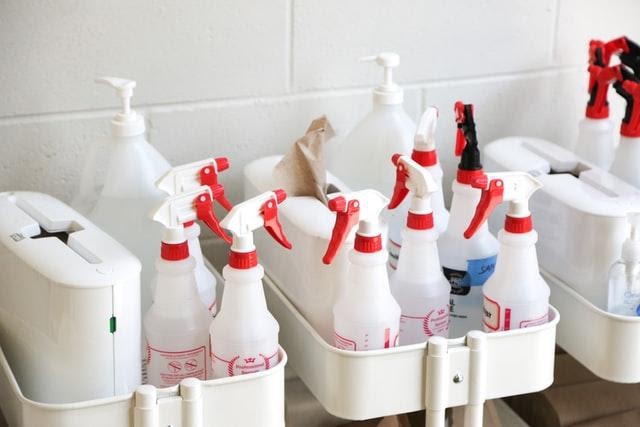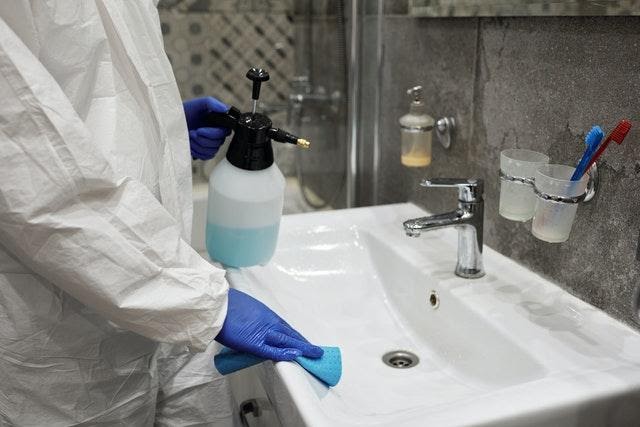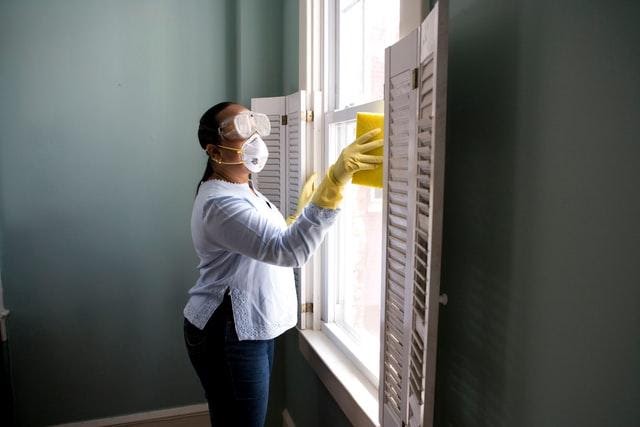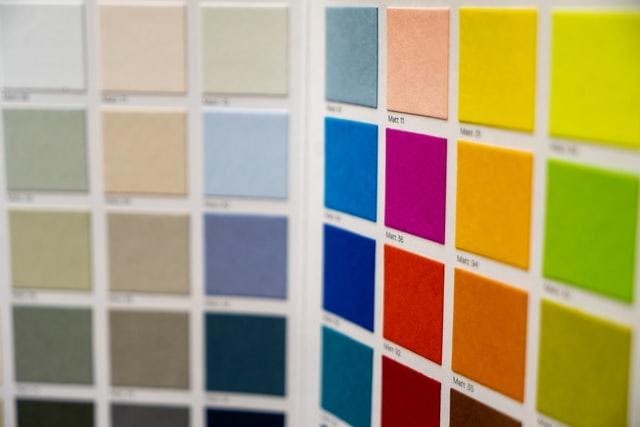Different working areas have distinct cleaning requirements. Thus, approximately all industries benefit from color-coded cleaning, from medical centers and daycares to hotels and restaurants. The color-coded program intends to help cleaning companies identify different colored cleaning products (cloths, mops, rags) for specific tasks and areas at the facility they maintain. Therefore, the CCC is an essential staple at any good cleaning company.
It is vital because it prevents cross-contamination. In simple terms, the colors help avoid using the same cloth in bathrooms and on kitchen surfaces. This is an undesirable scenario since most common toilet bacteria can cause vomiting and throat infections. For that reason, we’ve gathered the most critical information to help you understand this concept better.
The meaning of colors
There’s no general standard of colors in the U.S. However, this trend was developed by The British Cleaning Institute. According to them, there are five color codes.
- RED – used for areas with a high risk of cross-contamination and infection spreading, like toilets and bathrooms;
- YELLOW – used for infectious areas, such as medical centers and hospitals;
- BLUE – for general areas and cleaning, such as offices, hallways, corridors;
- GREEN – for food preparation areas, especially kitchens;
- WHITE – for operating theatres.

However, the color code you end up choosing is entirely up to you. You can select a specific color and assign it to a particular area. Anyhow, you will need to make sure your staff members get proper training about the colors of your choice.
Furthermore, color-coded cleaning isn’t for commercial use only. You can follow the principles in your own home and make your cleaning game run smoothly. Following these principles will especially come in handy when you have an upcoming big event. For instance, you might be throwing a big party, or you’re about to relocate from your old home and need to leave it clean. Either way, when you get the hang of color-coding, the cleaning process will get quicker and easier.
What can be color-coded?
The cleaning essentials to color-code are the following:
- buckets and mop buckets;
- mop heads and mop handles;
- brushes and brooms (with heads and handles);
- cleaning cloths;
- rubber gloves;
- scrubbing brushes, etc.
The advantages of color-coded cleaning
Using one mop to clean all restaurant areas can be harmful because of the potential spreading of infection and bacteria from the washrooms to the food preparation areas. Therefore, integrating this principle into your company’s existing program will help in numerous areas. Let’s take a look at the advantages of this way of commercial cleaning.
Color-coded cleaning ensures infection control
The emphasis on the prevention of cross-contamination and infection control is the fundamental principle in the professional cleaning industry. There has been an increased public awareness of severe outbreaks of influenza, Escherichia coli, Salmonella, and more. If you have been hired as a professional cleaning company, it’s your job to ensure you are not contributing to the spreading of the infection.
By making sure your color-coded cleaning program is in place, you will contribute to avoiding cross-contamination. In addition, by having your cleaning equipment sorted by color, your staff will know which ones to use for the restrooms and food preparation stations. The general recommendation is to start by cleaning the cleanest areas and finish with the dirtiest ones. We mean that if you are cleaning a restroom, you should begin with sinks and finish off with toilets.

Specific task identification across departments
As we have mentioned initially, there’s no rule established in the U.S. about color usage. However, you can choose to use the general trend we found out from relocation experts at getmovedtoday.com. They have successfully worked with cleaning companies, which were the necessary part of a relocation process. They generally use red for high risk of cross-contamination areas, green for food prep areas, and blue for general cleaning tasks.
On the other hand, you can add different colors and create a system of your preference. The only important thing is to match the colors of the towels and cloths with the colors of bottles you use to clean. For instance, if you use a blue bottle for general cleaning tasks, such as window cleaning, make sure you use blue cloth too.

Simplified team member training
Finally, if you want to run a successful cleaning business that makes both clients and staff happy, color-coding can help. Even if there may be language barriers among your employees, color is a universal language for everyone. By implementing a color-coding system, you will ensure no miscommunication between you and your team members. Additionally, this will result in consistent cleaning from the entire staff.
Furthermore, implementing color-coding into your cleaning service program will simplify your employees’ training and help exclude confusion. Moreover, you can have a poster with illustrations that represent your color-coded cleaning system. It will not only help you train employees but ensure the consistency of your program too.

A thing to remember is that there’s a minority of people that are color blind. Therefore, you need to make sure you include color identification testing as a part of the training. If there is a color-blind person in your team, you can use a number system linked to the colors and help them overcome this.
The takeaway
Having a color-coded cleaning system isn’t mandatory by law. However, when your employees are under increased pressure, it’s not worth just trusting they won’t ever mix cleaning products and other equipment. This is why color-coding is always effective. You will make sure the clients who hired professional cleaners are satisfied while ensuring a complete sanitization process. The system is easy to implement and follow. Most importantly, it reduces risks and makes the establishments you maintain safe and clean spaces.
Author’s bio:
Albert Norris is a part-time freelance writer with expertise in all things living and working spaces related. He has helped numerous readers learn about home maintenance, packing and relocating, house furnishing, decorating. Albert says he enjoys sharing his knowledge and insights with his readers.

